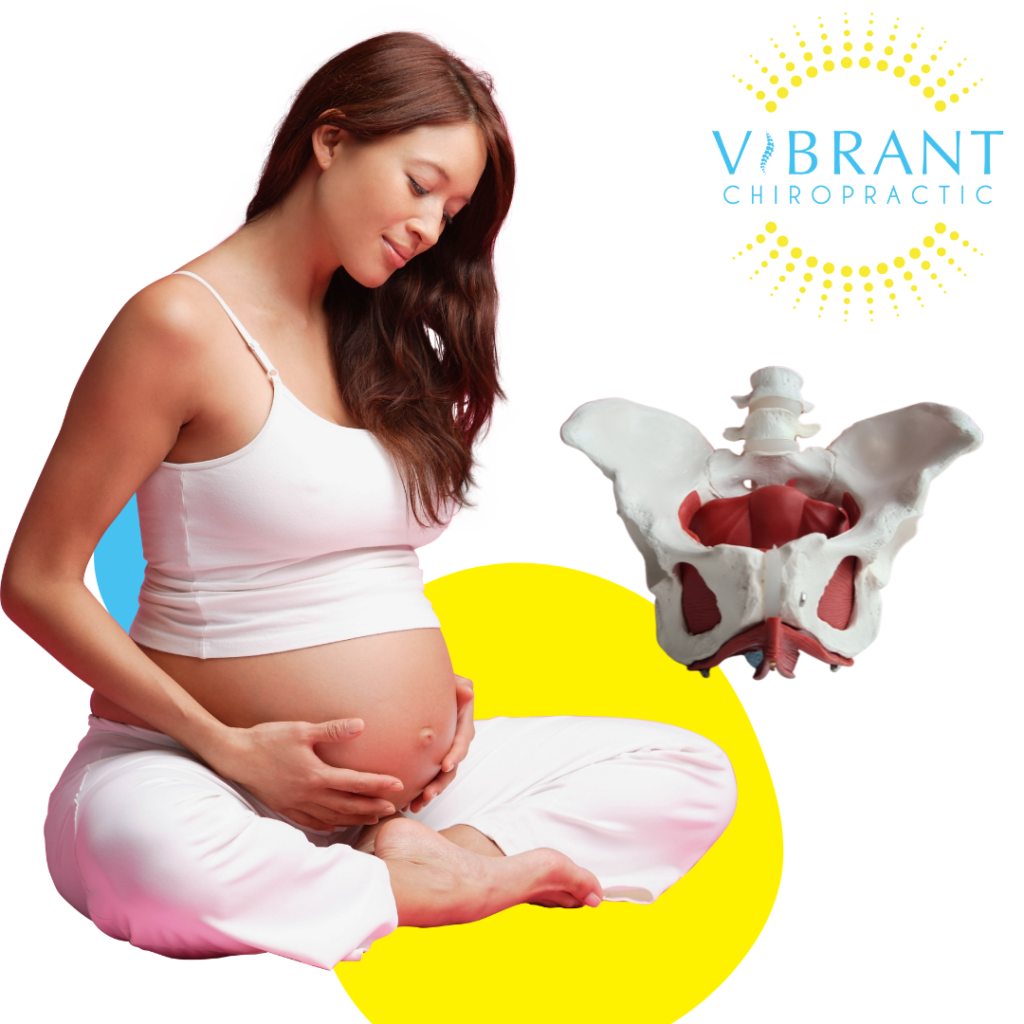Dr. Nita here from Vibrant Chiropractic, and today, I want to talk about something that many pregnant women experience but often don’t fully understand: pelvic girdle pain (PGP). Pregnancy is an incredible journey, but it can also bring along its fair share of discomforts, and PGP is one of them. So, let’s dive in and explore what it is, why it happens, and most importantly, what you can do about it.
What is Pelvic Girdle Pain?
Pelvic girdle pain refers to discomfort or pain in the pelvic area during pregnancy. It can range from mild to severe and typically manifests as pain in the front or back of the pelvis, hips, buttocks, or groin. Some women may also experience pain radiating down the thighs. PGP can make simple tasks like walking, standing, or even turning over in bed challenging and uncomfortable.
Why Does Pelvic Girdle Pain Occur During Pregnancy?
During pregnancy, your body undergoes significant changes to accommodate your growing baby. Hormonal changes, particularly the hormone relaxin, loosen the ligaments and joints in the pelvic area to prepare for childbirth. While this is essential for childbirth, it can also lead to instability and misalignment in the pelvic joints, resulting in PGP. Additionally, the added weight and shifting center of gravity during pregnancy can further strain the pelvic region, exacerbating the discomfort.

What Can You Do About Pelvic Girdle Pain?
The good news is that there are steps you can take to alleviate pelvic girdle pain and improve your overall comfort during pregnancy:
- Chiropractic Care: Chiropractic adjustments can help realign the pelvis, relieve pressure on the nerves, and restore proper function to the joints. At Vibrant Chiropractic, we specialize in gentle and safe chiropractic care for pregnant women. Our adjustments are tailored to accommodate your changing body and provide relief from PGP.
- Pelvic Support: Wearing a maternity support belt or pelvic support garment can provide additional stability to the pelvic region and help reduce discomfort. These supportive devices can be especially beneficial when engaging in physical activities or spending extended periods on your feet.
- Exercise: Gentle exercises and stretches designed to strengthen the pelvic muscles and improve stability can help alleviate PGP. Swimming, walking, and prenatal yoga are excellent options for pregnant women.
- Posture Awareness: Maintaining good posture can help alleviate strain on the pelvic joints. Avoid standing or sitting for prolonged periods and practice proper body mechanics when lifting or carrying objects.
- Heat and Cold Therapy: Applying heat packs or cold compresses to the affected area can help reduce inflammation and provide temporary relief from pain.
- Rest and Relaxation: Make sure to prioritize rest and relaxation during your pregnancy. Listen to your body and take breaks when needed. Incorporating relaxation techniques such as prenatal massage or meditation can also help reduce stress and tension in the pelvic region.
Final Thoughts
Pelvic girdle pain is a common discomfort experienced by many pregnant women, but it doesn’t have to derail your pregnancy journey. By incorporating chiropractic care, supportive measures, gentle exercise, and self-care techniques, you can manage PGP effectively and enjoy a more comfortable and vibrant pregnancy.
Remember, if you’re experiencing pelvic girdle pain or any other discomfort during pregnancy, don’t hesitate to reach out to us at Vibrant Chiropractic. We’re here to support you every step of the way on your journey to motherhood. Wishing you a happy and healthy pregnancy!
